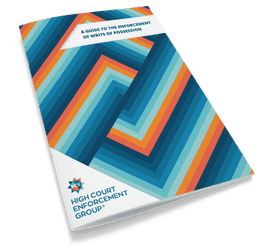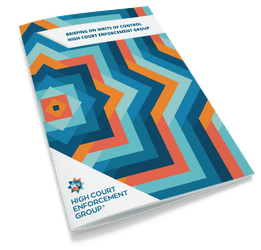Enforcement options for creditors

There are several judgment enforcement options available for creditors, including High Court enforcement, and the creditor may use more than one, either at the same time or consecutively.
High Court enforcement
Naturally, we think this is a strong option! For a court fee, the judgment is transferred to the High Court for enforcement by a High Court Enforcement Officer (HCEO) under a High Court writ of control.
A notice of enforcement is sent giving the debtor seven days in which to pay, otherwise the HCEO will attend the debtor’s premises to enforce the writ. They can attend seven days a week between 06:00 and 21:00. For commercial organisations that normally operate at night, the HCEO can also enforce during their operating hours.
The writ of control binds the goods of the debtor from the point of issue, meaning that it is an offence for the debtor to remove or sell the goods. The HCEO will look to take payment in full during the visit but may also accept an arrangement for payment in instalments. If a payment arrangement is made, the goods are covered by a controlled goods agreement, which prevents the debtor from removing, selling or otherwise disposing of them.
If it is not possible to obtain any payment, there is a compliance fee + VAT payable by the debtor.
County Court bailiff
The County Court bailiff (CCB) operates under a warrant of control. They also send a notice of enforcement, giving seven days’ notice to the debtor and are permitted to enforce during the same hours as an HCEO.
However, as CCBs are civil servants, they tend to only operate normal working hours, which can make it harder to enforce at residential addresses where the debtor is out at work during the day.
Some courts also have significant backlogs of cases, so this option may also be slower than an HCEO.
If the creditor has tried using the CCB, they can then instruct an HCEO, but the same judgment cannot be enforced simultaneously by both.
Charging order
Where the debtor has minimal assets to satisfy the debt, a charging order can be applied for. This will mean that, when the property is sold, the debt and interest will be repaid from the proceeds.
A charging order can be used to cover more than one judgment against the debtor and can be secured against property, land, securities, funds in court and interest under a trust.
The main disadvantage of a charging order is that the creditor may have to wait years before the property is sold. The creditor may apply to court for an order for sale, but will have to have a very strong case to persuade a judge to order an immediate sale.
A creditor with a charging order can use other enforcement methods, such as a writ of control, to obtain payment.
Third party debt order
The third party debt order instructs a third party, for example, a bank or building society, to pay the sum of the judgment debt to the creditor.
The main drawbacks to this form of enforcement are two-fold. Firstly, the creditor will have to know the bank account details and the amount in the bank. This can be obtained via an order for information, but the details may not always be up to date or complete.
Secondly, the money has to be available at the time at which the order is enforced. If there is no money in the account at that point, then the creditor will have to apply for a new order or consider other enforcement options.
Attachment of earnings order
The attachment of earnings order (AEO) may only be used against an individual debtor. For a consolidated attachment of earnings order, a fee of 10p for every £1, or part £1, of money paid into court is deducted from the money before it is paid out to the creditor.
Although there are fixed deduction rates based on earnings, the debtor may request that the court set an amount repayable each month based on affordability, meaning that it could take a long time for the debt to be repaid. If the debtor loses their job, payments will stop until they find new employment.
Once the AEO has been made, it is not permissible to use any other enforcement proceedings, so the AEO might be better considered after enforcement under a writ or warrant has been attempted first.



